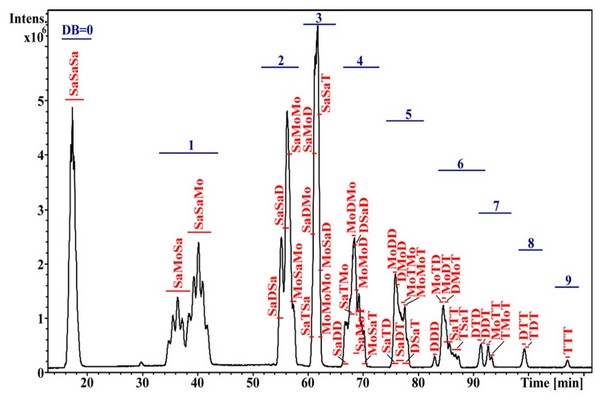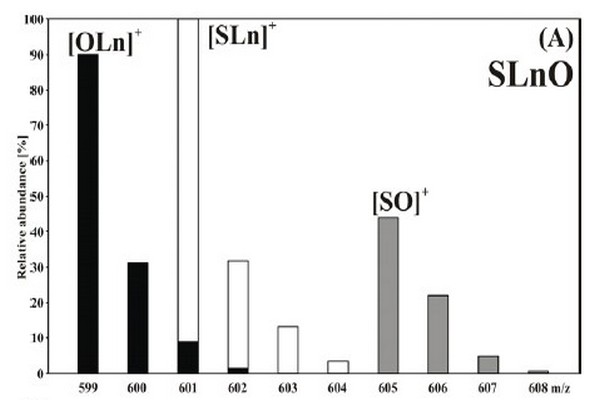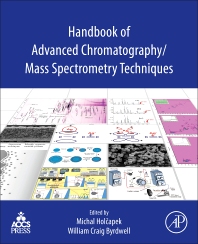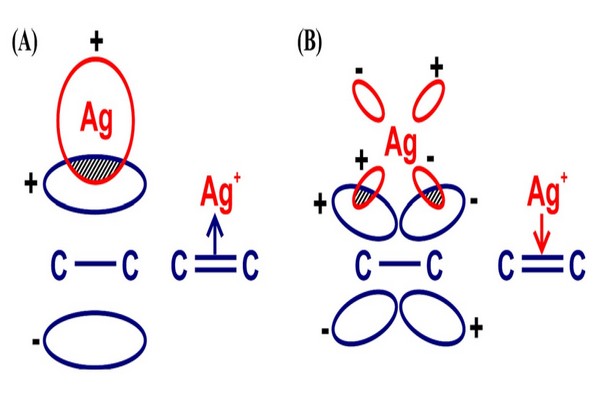
Figure 4.1
Description of complex bonding between silver ions and double bonds (DBs) by the Deware-Chatte-Duncanson model: (A) s-donation and (B) pi-back-bonding interactions between the metal and DB. Ag, silver ion.
Redrawn with permission from Dewar, J.S., 1951. A review of the pi-complex theory. Bulletin De La Societe Chimique De France

Figure 4.2
Off-line two-dimensional chromatograms of blackcurrant oil using nonaqueous reversed-phase (NARP) in the first dimension and silver-ion mode in the second dimension after fraction collection each minute: (A) dot plot with the peak identification, double bond (DB), and equivalent carbon number (ECN) labeling, (B) contour plot showing peak intensities. Ag-HPLC, silver-ion high performance liquid chromatography.
Reprinted with permission from Holčapek, M., Velínská, H., Lísa, M., Česla, P., 2009. Orthogonality of silver-ion and non-aqueous reversed-phase HPLC/MS in the analysis of complex natural mixtures of triacylglycerols. J. Sep. Sci. 32, 3672-3680.
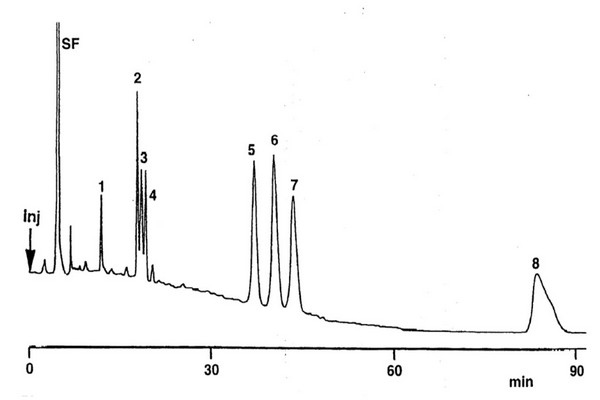
Figure 4.3
Separation of fatty acids phenacyl esters of C18:3 cis/trans geometrical isomers by silver-ion high performance liquid chromatography. Peak annotation: SFdsolvent front, 1- (delta)9t,12t,15t, 2- (delta)9t,12c,15t, 3- (delta)9c,12t,15t, 4- (delta)9t,12t,15c, 5- (delta)9c,12t,15c, 6- (delta)9t,12c,15c, 7- (delta)9c,12c,15t, 8- (delta)9c,12c,15c.
Reprinted with permission from Juaneda, P., Sebedio, J.L., Christie, W.W., 1994. Complete separation of the geometrical-isomers of linolenic acid by high-performance liquid e chromatography with a silver ion column. HRC - J. High Res. Chromatog. 17, 321-324.
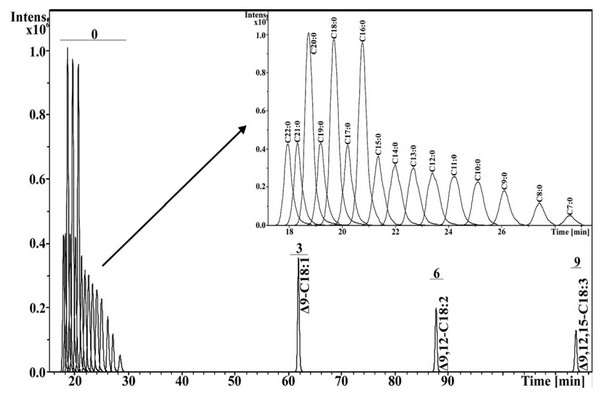
Figure 4.4
Ag-HPLC/APCI-MS chromatogram of monoacid triacylglycerols standards. Numbers correspond to the double bonds number. Inset zoom shows the resolution of saturated TG from C7:0 to C22:0. Concentrations of all standards are identical except for C16:0, C18:0, and C20:0 with doubled concentrations. Ag-HPLC, silver ion high-performance liquid chromatography; APCI, atmospheric pressure chemical ionization; MS, mass spectrometry.
Reprinted with permission from Holčapek, M., Dvořková, H., Lísa, M., Girón, A.J., Sandra, P., Cvačka, J., 2010. Regioisomeric analysis of triacylglycerols using silver-ion liquid chromatography-atmospheric pressure chemical ionization mass spectrometry: comparison of five different mass analyzers. J. Chromatogr. A 1217, 8186-8194.
